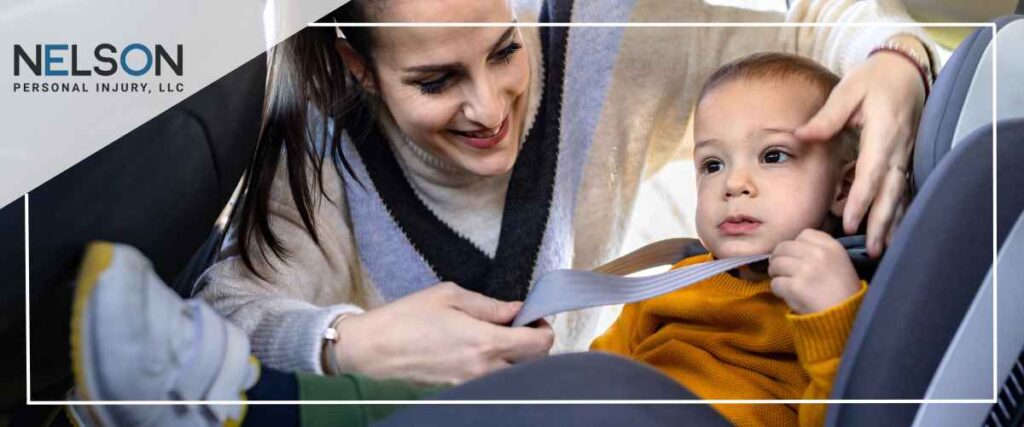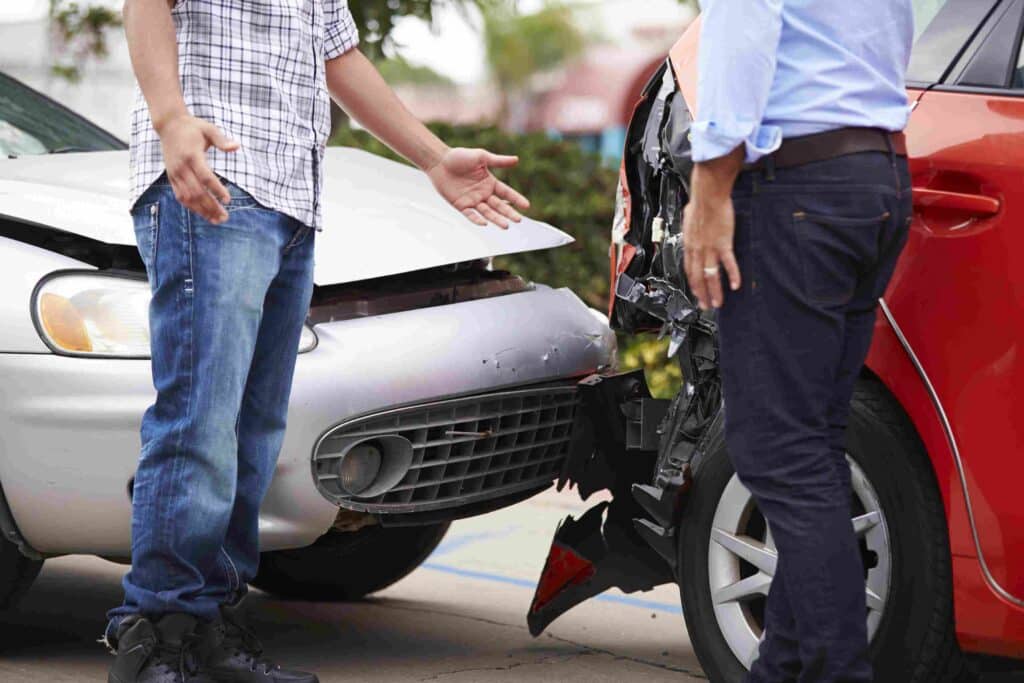Car accidents can have devastating consequences for all who are involved. This is especially true for vulnerable young passengers. Implementing and adhering to car seat laws is crucial in minimizing injuries and fatalities among children in the event of a collision. For those who have experienced a car accident, understanding and complying with Minnesota’s car seat laws is vital for protecting your loved ones and ensuring legal compliance.
Our Minneapolis car accident lawyers at Nelson Personal Injury, LLC are here to provide information regarding Minnesota’s car seat laws, discuss their importance, and offer practical advice for staying compliant.
Understanding Minnesota Car Seat Laws
Minnesota has stringent car seat laws designed to ensure the safety and well-being of young passengers on the road. Adhering to these regulations not only helps protect children but also ensures you are following state laws, which can prevent potential fines and penalties. Here’s a detailed breakdown of the current regulations:
Age, Weight, and Height Requirements
Rear-Facing Car Seats
It is recommended that infants and toddlers use a car seat that is rear facing until they meet the height or weight limit set by the manufacturer of the car seat. Usually, until around the age of 2, experts advise keeping children rear-facing for as long as possible to enhance safety during potential accidents. Rear-facing car seats safeguard the child’s head, neck, and spine by dispersing crash forces along the seat’s back.
Forward-Facing Car Seats
When a child exceeds the limits of their rear-facing car seat, it is time to switch to a forward-facing car seat that has a chest harness to hold the child securely in place. This is generally until at least age 4, though longer use is encouraged if the seat’s limits accommodate it. Forward-facing seats with harnesses provide substantial protection by restraining the child at the strongest parts of their body, helping to prevent injury during sudden stops or accidents.
Booster Seats
When children outgrow car seats that are forward-facing, they should use a booster seat until they are tall enough to fit properly in a seat belt. Minnesota law specifies that this is typically until the age of 8 or until the child reaches 4 feet 9 inches in height. Booster seats position the seat belt so that it fits properly over the stronger parts of your child’s body, significantly reducing the risk of injury.
Seat Belts
Once children outgrow their booster seats, they should use the vehicle’s seat belt. It’s crucial that the belt fits correctly, with the lap belt lying snugly across the upper thigh area and the shoulder belt lying snugly across the chest and shoulders, not the face or neck. A proper fit ensures that the seat belt can effectively absorb and distribute the forces during a crash, protecting vital areas such as the chest and abdomen.
By following these guidelines, parents and guardians can provide the highest level of protection for their children while traveling. Regularly checking that car seats are properly installed and fit the child correctly is essential, as is staying informed about any updates to car seat laws and recommendations.
Importance of Car Seat Safety
Proper use of car seats is one of the most effective measures to protect children in the event of a car accident. Ensuring that children are securely fastened in car seats appropriate for their age, weight, and height can significantly enhance their safety. Here are some compelling statistics and insights:
- Reduction in Risk: Reports from the National Highway Traffic Safety Administration (NHTSA) demonstrate that car seats decrease the chance of fatal injury by 71% for infants and 54% for toddlers when traveling in passenger cars. This remarkable reduction is attributed to the way car seats are designed to absorb crash forces and protect the child’s vital organs.
- Preventing Injury: Booster seats, which are used for older children who have outgrown their forward-facing seats, reduce the risk of serious injury by 45% for children aged 4 to 8 compared to seat belts alone. Booster seats elevate children so that seat belts fit properly, ensuring that the belts contact the strongest parts of the body, such as the chest and pelvis, rather than the neck or abdomen.
- Legal Implications: Non-compliance with car seat laws can result in fines and increased legal liabilities, particularly in the aftermath of a car accident. Most regions have specific regulations regarding car seat use, which, if not followed, can also lead to higher insurance premiums. Beyond the financial repercussions, abiding by these laws is crucial for ensuring the safety and well-being of children while traveling.
Investing in a high-quality car seat and taking the time to install it correctly is a small price to pay for the safety of your child. Regular checks and adjustments as your child grows are also important to maintain the protective benefits of the car seat. Remember, car seat safety is not just a legal requirement but a vital aspect of responsible parenting.
Tips for Compliance
Here are some practical steps to ensure you’re following the law and keeping your children safe:
- Regular Checks: Periodically check your car seat installation and ensure it meets the manufacturer’s specifications.
- Stay Updated: Laws can change, so stay informed about the latest regulations and best practices.
- Professional Assistance: Many communities offer car seat inspection services. Take advantage of these to ensure your seats are correctly installed.
- Education: Educate yourself and anyone else who transports your child about proper car seat use.
Protecting Your Legal Rights Following a Car Accident
If you’ve been involved in a car accident, it’s crucial to understand your legal rights, especially regarding car seat compliance. Properly securing a child in a car seat is not just a matter of safety; it is also a legal requirement that can significantly impact your case. Failure to comply with these regulations can complicate legal matters, potentially leading to fines, penalties, or reduced claims and settlements. Additionally, the aftermath of an accident can be overwhelming, with insurance companies and legal proceedings creating further stress.
Seeking the guidance of an experienced car accident attorney in Minnesota can help navigate the complexities of the legal system, ensuring that your rights are protected and that you receive the compensation you deserve. A car accident attorney in Minnesota can provide valuable advice on handling interactions with insurance companies, gathering necessary evidence, and representing your interests in court if needed.
Contact Our Minneapolis Car Accident Lawyer
By understanding and adhering to Minneapolis car seat laws, you can significantly reduce the risk of injury to your children in the event of a car accident. If you were involved in a car accident, you should seek help from our car accident attorney in Minnesota today.
At Nelson Personal Injury, LLC, we have extensive experience helping victims of car accidents understand their rights and secure the compensation they deserve. Contact us today for a free consultation. Protect your family and your rights with the help of our dedicated Minneapolis car accident lawyers.




